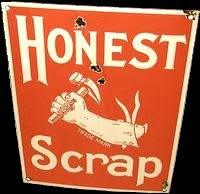Once upon a time ...
there was a telegraph operator, Lester Dent, who worked the graveyard shift. One of his co-workers sold a story for $450
--which was a fortune at the time--
and Dent thought, "Hey, I could do that!"
Turned out he was right.
Dent eventually wrote over 159 novels over 16 years
--and that was just
the Doc Savage novels!
He celebrated his affluence by buying a yacht and
sailing around the world.
He had a Master Formula to write a selling 6,000 word short story.
"There is a formula, a master plot, for any 6000 word pulp story.
It has
worked on adventure, detective, western and war-air.
It tells exactly
where to put everything. It shows definitely just what must happen in
each successive thousand words.
No yarn of mine written to the formula has yet failed to sell."
Here’s how it starts:
1. A DIFFERENT MURDER METHOD FOR VILLAIN TO USE
2. A DIFFERENT THING FOR VILLAIN TO BE SEEKING
3. A DIFFERENT LOCALE
4. A MENACE WHICH IS TO HANG LIKE A CLOUD OVER HERO
FIRST 1500 WORDS
1–First line, or as near thereto as possible, introduce the hero and
swat him with a fistful of trouble. Hint at a mystery, a menace or a
problem to be solved–something the hero has to cope with.
2–The hero pitches in to cope with his fistful of trouble. (He tries to
fathom the mystery, defeat the menace, or solve the problem.)
3–Introduce ALL the other characters as soon as possible. Bring them on in action.
4–Hero’s efforts land him in an actual physical conflict near the end of the first 1500 words.
5–Near the end of first 1500 words, there is a complete surprise twist in the plot development.
The rest of the MASTER PLOT can be found here:
http://docsavage.org/2009/08/lester-dents-secret-master-plot/
Then, there are ROBERT HEINLEIN'S RULES FOR WRITING:
He said he sold every story he ever wrote so he might just have known what he was saying, right?
1. You must write .
2. You must finish what you start.
3. You must refrain from rewriting except to editorial order.
4. You must put it on the market
5. You must keep it on the market until sold.
Many writers have problems with #3.
But there are so many who write, re-write, and re-write until they wring the very life out of their prose.
WHAT DO YOU THINK?

























































































































































































Hi Roland - what an interesting post - and the answer really is 'just do it' and get on with it .. don't wait around. Fascinating post .. cheers Hilary
ReplyDelete"Just Do It" -- yes, that is the key to most things. Most jobs become easier once you start them! :-)
DeleteI think this is a great way to look at writing and the ideals of finishing what you started. I have always that the way I talk is the way I would write... then grammar is the villain of this story. Great post as always!
ReplyDeleteThat's what professional editors are for -- to help us with our grammar etc. :-) Thanks so much for visiting and staying to talk.
DeleteHeinlein was a huge success.
ReplyDeleteWill take a look at the rest of Dent's steps for sure.
Yes, if only we could get a fraction of Mr. Heinlein's success, right? :-)
DeleteI agree with Heinlein about rewriting. If it is to make the message clearer with less words. Rewrite. Other than that, a story stands on its own merit. Some people will like it and others not.
ReplyDeleteI agree. We should trust our instincts. How many of us have changed an answer on a test, only to find out our original reply was the right one! :-)
DeleteAs you know, Roland, I'm working (off and on) on a screenplay, and I recently learned the hard way that I wasn't following a time-honored sequence of events--what must happen by what page. So I tossed out most of what I had and have started over (although I'm still in the plotting stage), and I have to say that following this format (do such and such by page 12, this by page 25, this by 55) has not hindered by instead greatly helped me. And that was a surprise to me.
ReplyDeleteI guess that's why contractors use blueprints. We need to know where to lay the foundation and where to place the studs (in screenplays, the studs are human!) :-)
DeleteHave you read Blake Synder's SAVE THE CAT? It is focused on how to write a screenplay -- and the sequel, SAVE THE CAT STRIKES BACK, is great, too!
Best of luck on the screenplay.
I once bought a huge book that contained the complete screenplay of CASABLANCA and the story of how it was written because I love the movie so.
One of the few books that survived my house fire was the paperback of the screenplay of BUTCH CASSIDY AND THE SUNDANCE KID. I still read it for the joy of the written word. :-)